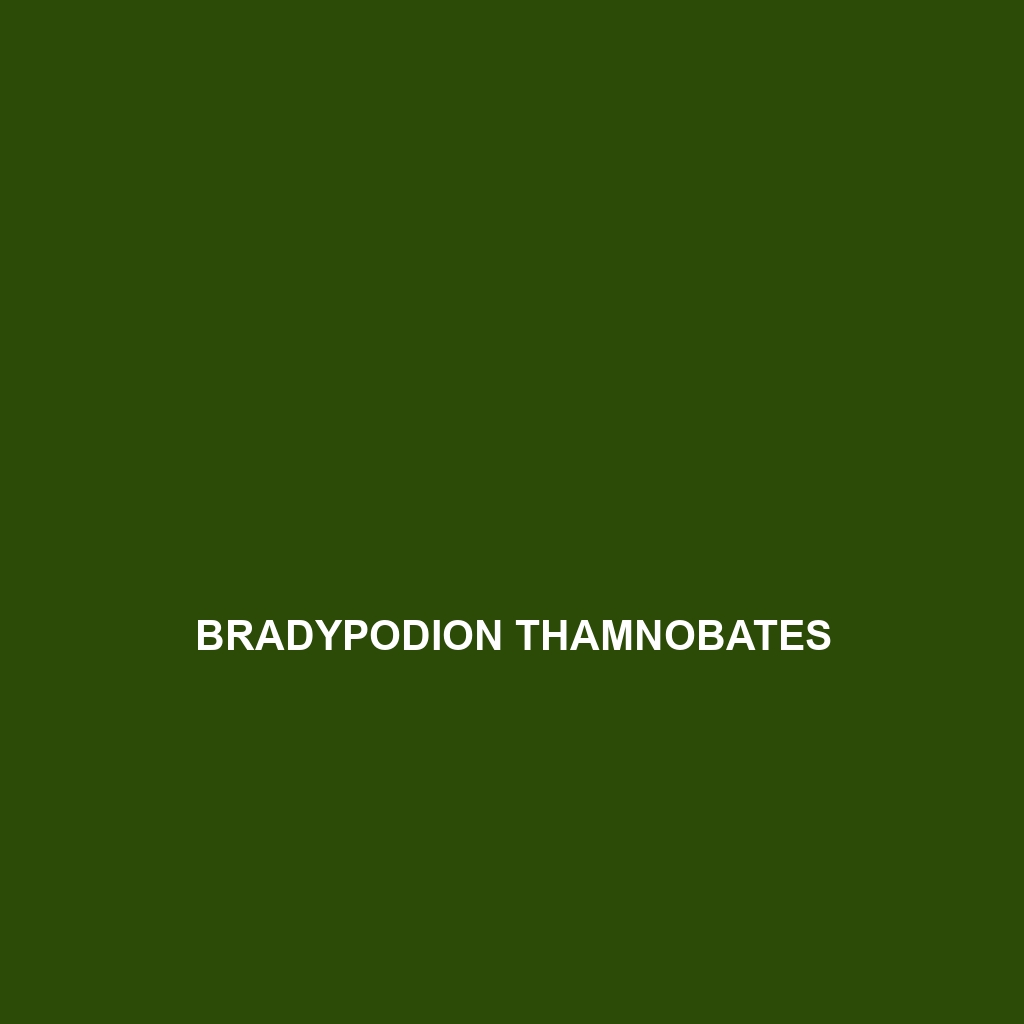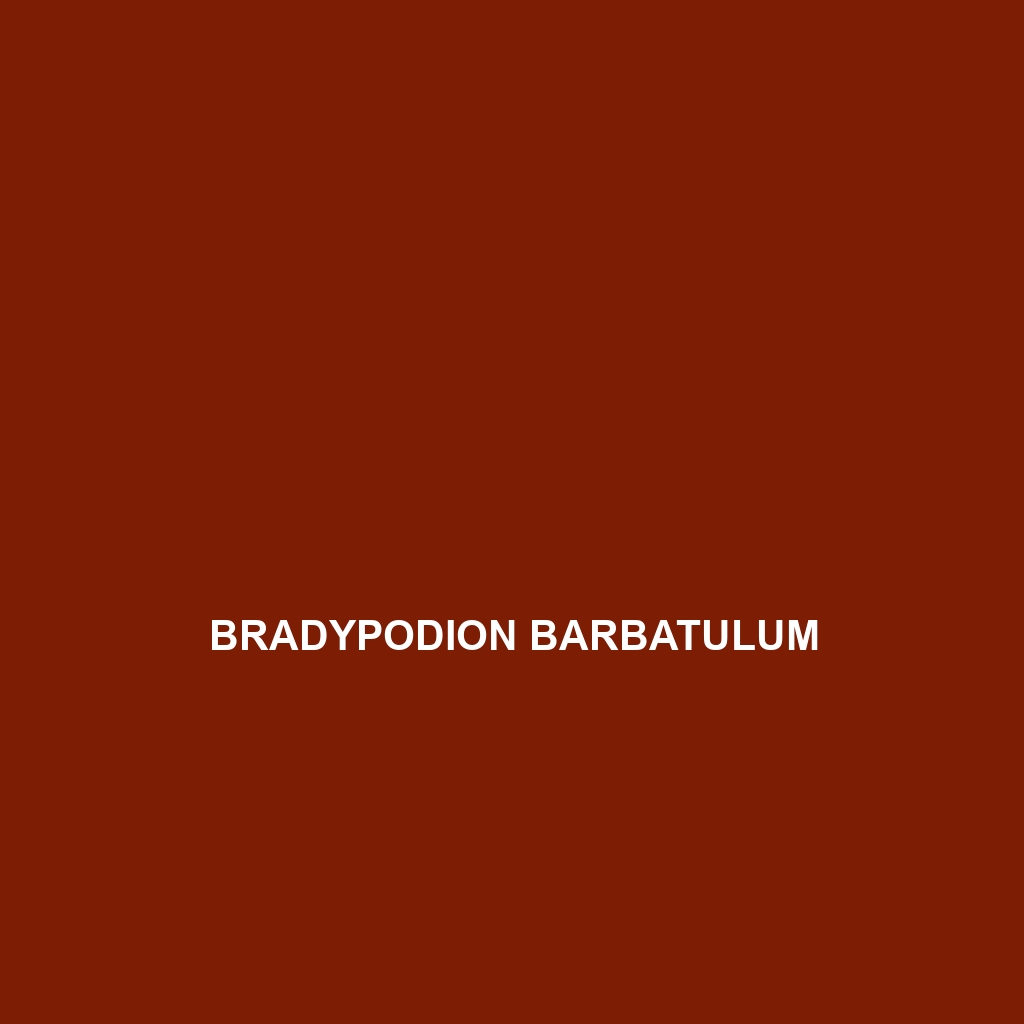Discover the Ventral Chameleon (Bradypodion ventrale), a small to medium-sized chameleon native to South Africa's subtropical forests, known for its vibrant color variations and unique prehensile tail. As a skilled insect hunter, this Vulnerable species plays a vital role in maintaining ecological balance within its habitat.
Tag: reptile conservation
Bradypodion thamnobates
Discover the Bradypodion thamnobates, or Southern Dwarf Chameleon, a small, vibrant chameleon measuring 15 to 20 cm, primarily found in the montane forests and fynbos of southern Africa. Known for its impressive camouflage and diurnal hunting of insects, this species plays a vital role in maintaining ecological balance but is currently classified as vulnerable due to habitat loss.
Bradypodion occidentale
Discover the unique Bradypodion occidentale, a vibrant chameleon native to South Africa's coastal forests, known for its striking green or brown coloration, arboreal lifestyle, and ability to change colors. This small, insectivorous species plays a crucial role in its ecosystem by controlling insect populations and supports local flora through pollination.
Bradypodion nemorale
Discover the Bradypodion nemorale, or forest chameleon, a small yet captivating species native to the temperate forests of South Africa. Known for its remarkable camouflage and slow, deliberate movements, this insectivorous chameleon plays a crucial role in the ecosystem while facing threats from habitat loss.
Bradypodion ngomeense
Discover the vibrant Bradypodion ngomeense, or Ngome chameleon, a medium-sized insectivore from South Africa's subtropical forests, known for its stunning color-changing abilities, distinctive crest, and role in maintaining ecological balance. This unique species is classified as Vulnerable, highlighting the importance of conservation efforts to protect its diminishing habitat.
Bradypodion melanocephalum
Discover the Bradypodion melanocephalum, or black-headed pygmy chameleon, a vulnerable species native to the coastal forests of South Africa. This small chameleon, measuring 15 to 20 cm, is renowned for its striking black head and vibrant green-yellow skin, playing a vital role in controlling insect populations while exhibiting unique behaviors and reproductive habits.
Bradypodion damaranum
Discover the vibrant Bradypodion damaranum, or Knysna chameleon, a stunning arboreal species from South Africa's coastal forests, known for its ability to change colors for camouflage and communication. With a unique casque, prehensile tail, and a diet primarily consisting of insects, this intriguing chameleon plays a vital role in maintaining ecological balance while facing threats from habitat loss.
Bradypodion caffrum
Discover the vibrant Bradypodion caffrum, or Cape dwarf chameleon, native to South Africa's fynbos and forest habitats. With stunning colors, unique behaviors, and a vital role in the ecosystem, this insectivorous species is both a predator and prey, showcasing remarkable adaptations like a prehensile tail and color-changing abilities.
Bradypodion atromontanum
Discover the unique Bradypodion atromontanum, a small chameleon measuring 15-20 cm, known for its striking color-changing abilities and distinct horn-like casque, thriving in South Africa's montane forests and grasslands. This vulnerable species is crucial for maintaining insect populations and serves as an indicator of ecological health in its habitat.
Bradypodion barbatulum
Discover the Eastern Cape Dwarf Chameleon (<i>Bradypodion barbatulum</i>), a vibrant species native to the lush montane forests of South Africa's Eastern Cape. Known for its striking colors, slow movements, and vital role in controlling insect populations, this vulnerable species thrives in dense vegetation and exhibits fascinating behaviors during its diurnal foraging hunts.







